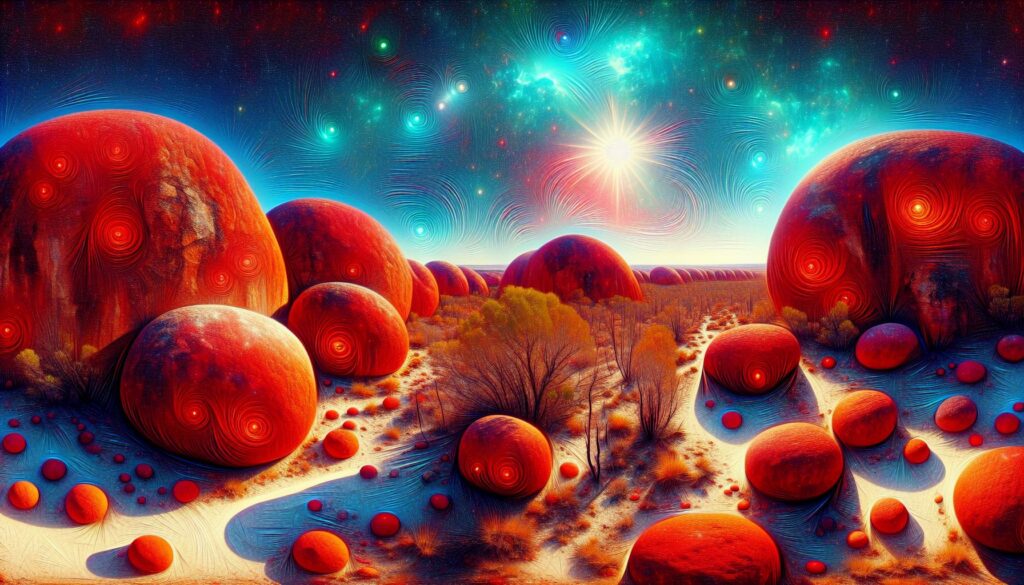The Devil’s Marbles hold a captivating place in Aboriginal folklore, weaving tales of creation and mystery into the Australian landscape. These massive granite boulders, scattered across the Northern Territory, aren’t just striking natural formations—they’re steeped in stories passed down through generations.
As I delve into the legends surrounding the Devil’s Marbles, I uncover how these monoliths symbolize powerful spirits and ancient wisdom. Exploring their significance offers a glimpse into the rich cultural heritage of the Aboriginal people and the profound connection they share with the land.
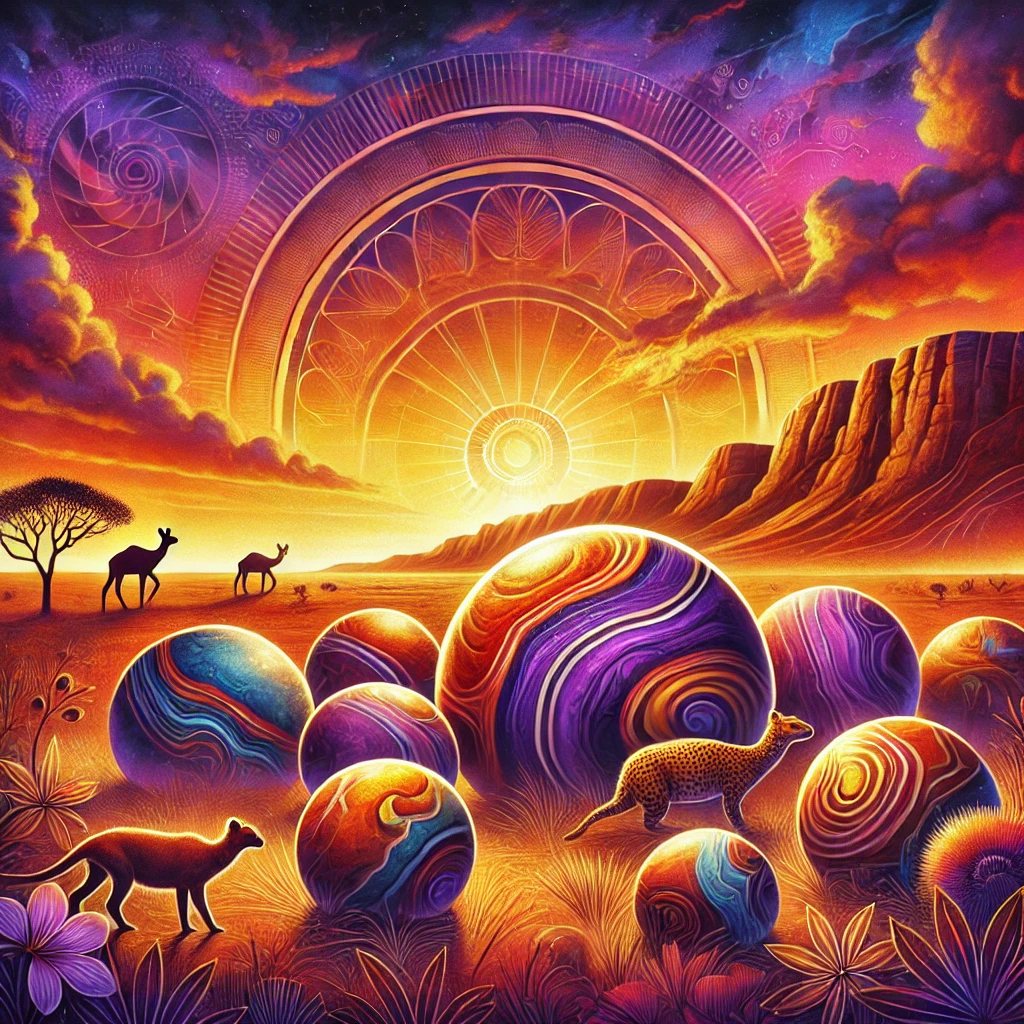
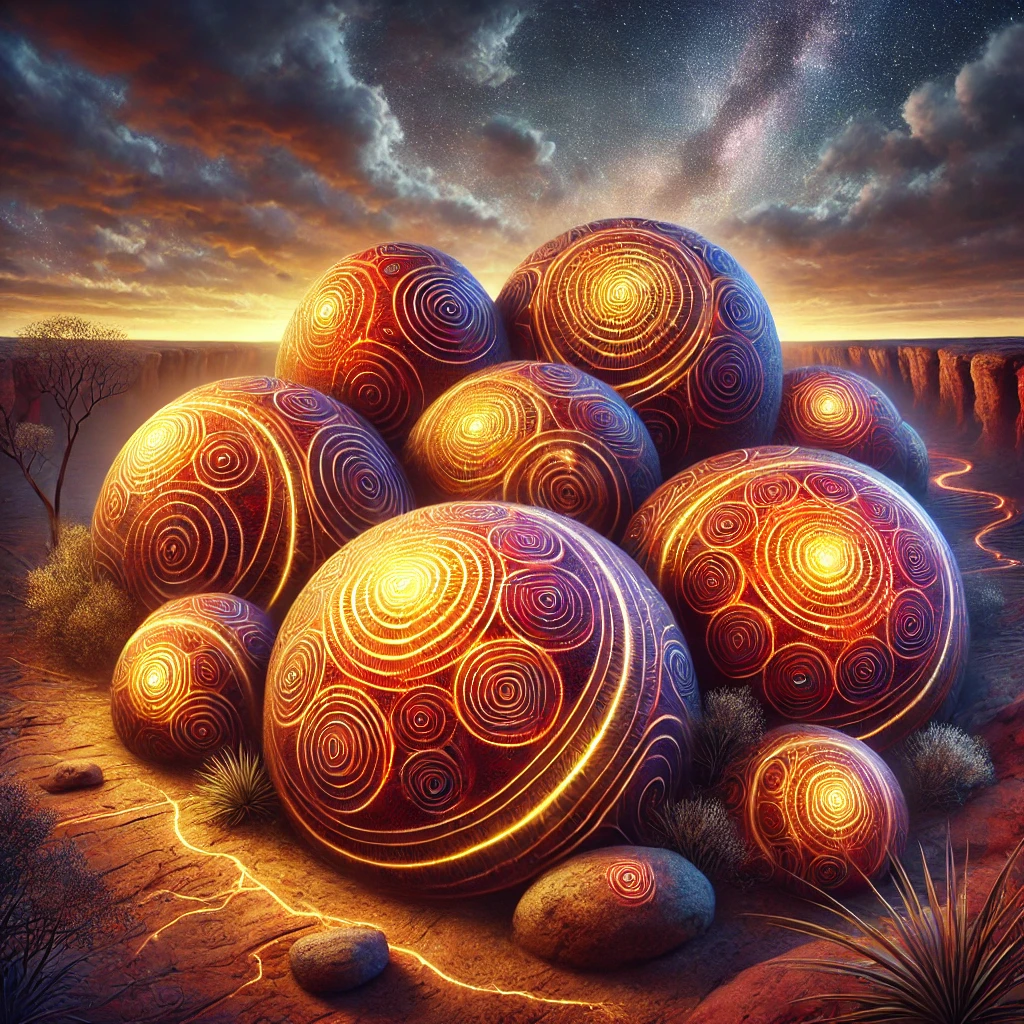
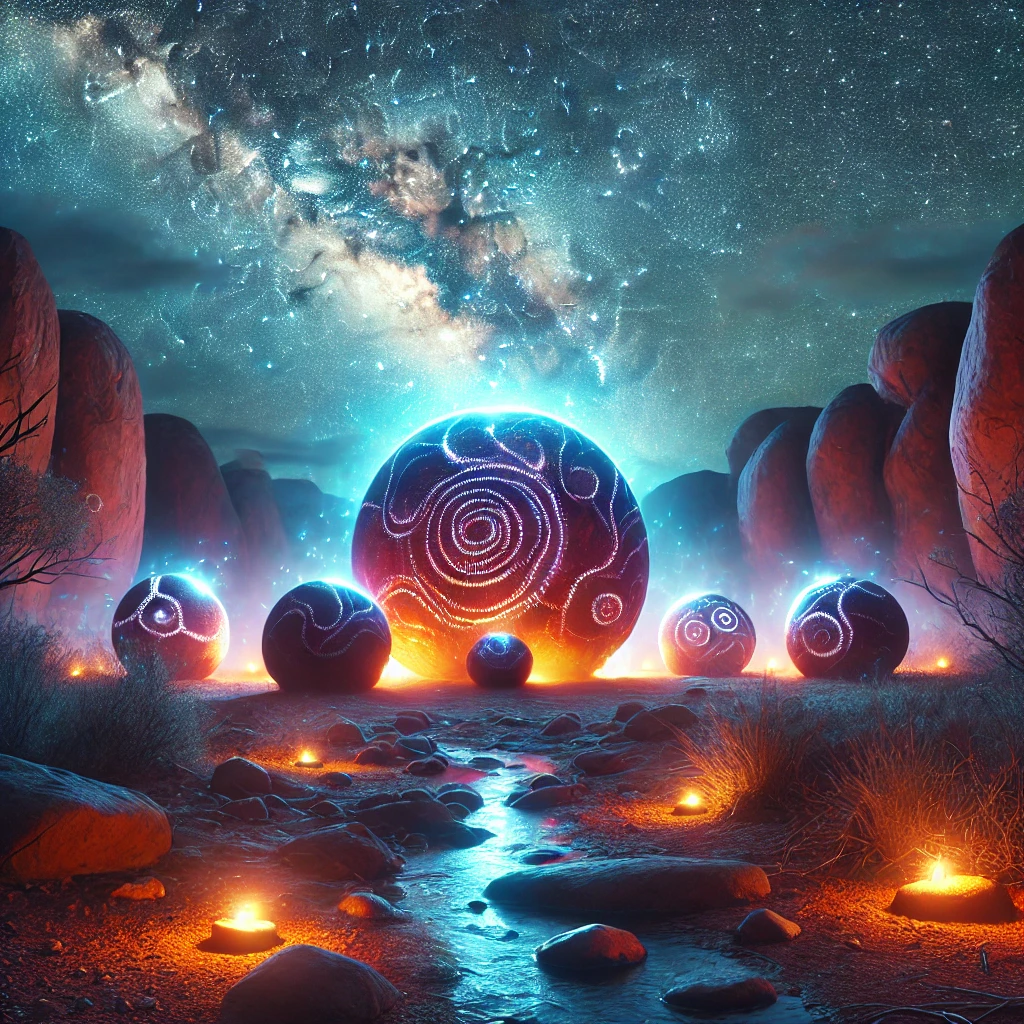

Understanding these stories not only enriches our appreciation of the Devil’s Marbles but also highlights the enduring relationship between indigenous communities and their environment. Join me as I journey through the myths and meanings that make the Devil’s Marbles a timeless emblem of Aboriginal tradition.
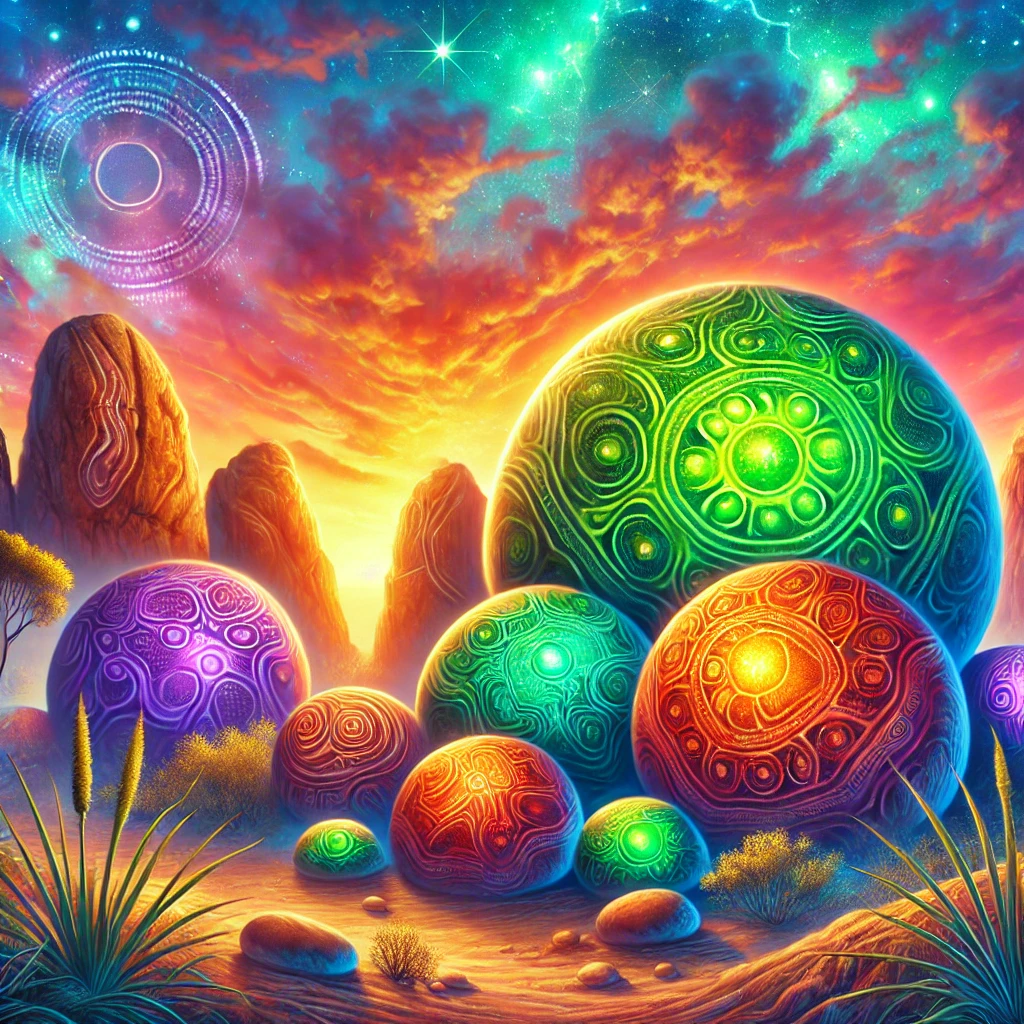
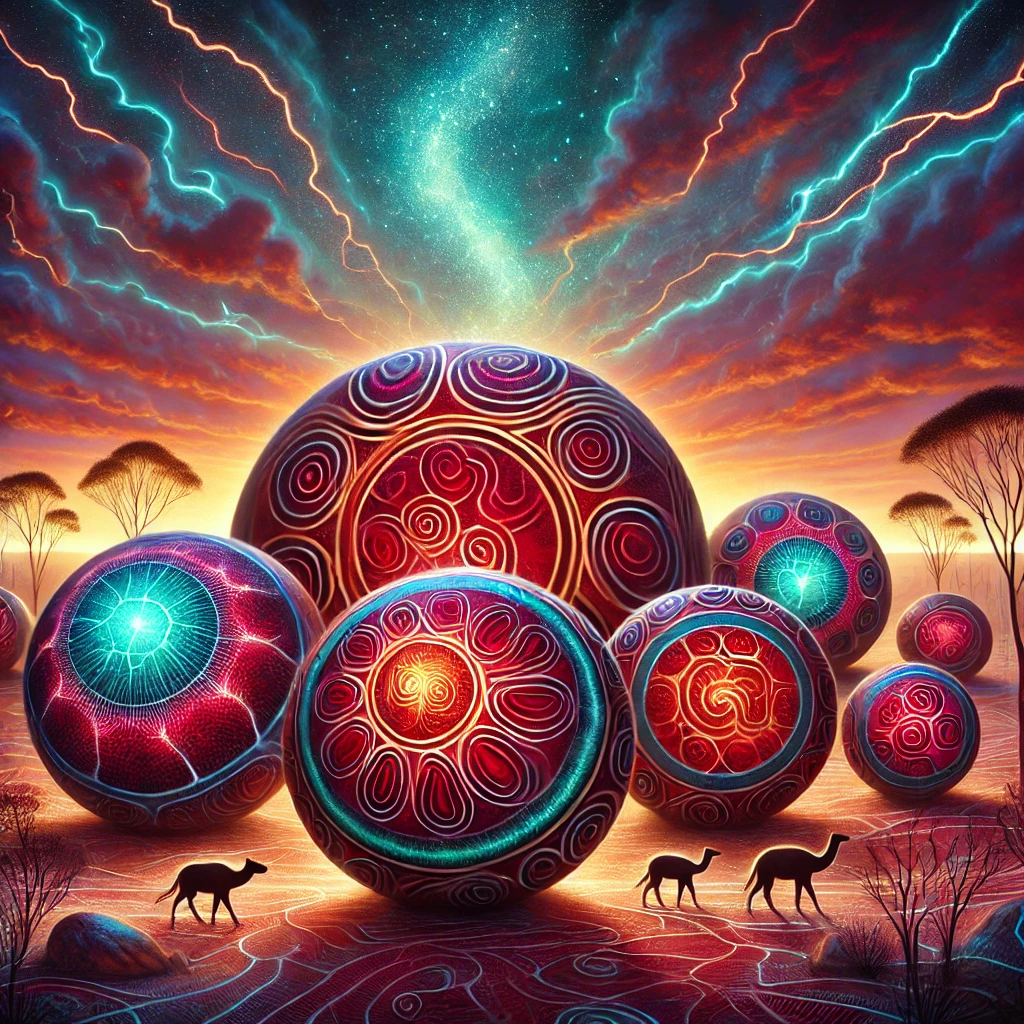
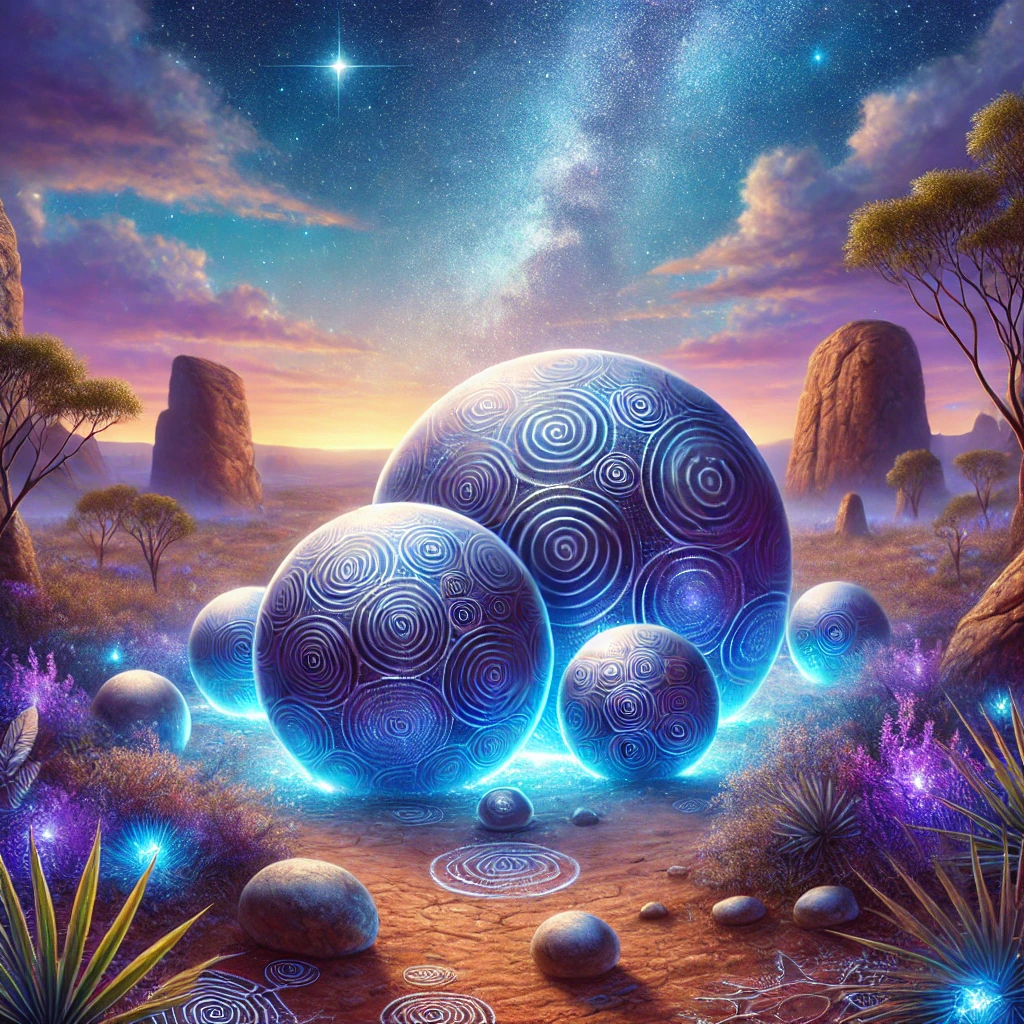
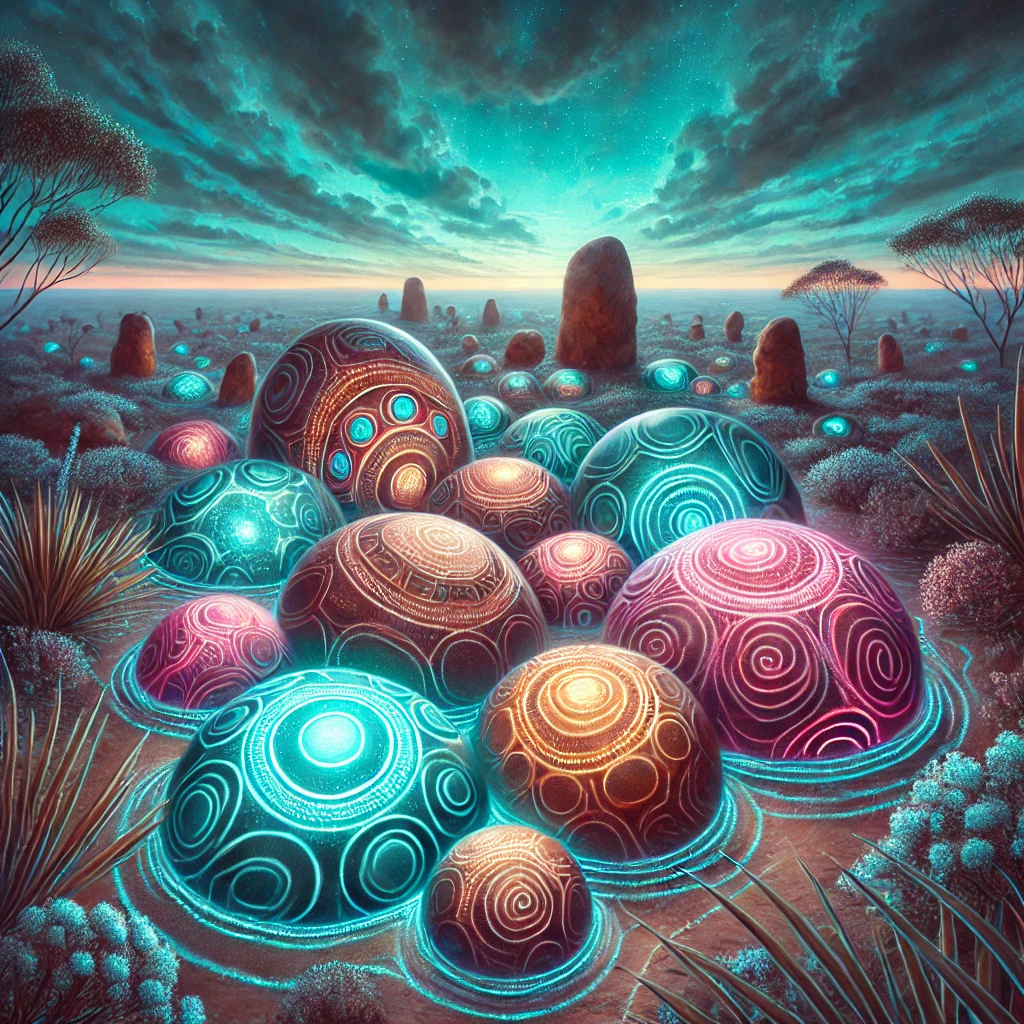
Significance in Aboriginal Folklore
The Devil’s Marbles, or Karlu Karlu, hold profound cultural and spiritual importance for Aboriginal communities in Australia’s Northern Territory.
Spiritual Beliefs
In Aboriginal folklore, the Devil’s Marbles are integral to Dreamtime stories, forming the spiritual foundation of indigenous cultures. The legend of Arrange, also known as the Devil Man, narrates how he shaped the boulders while crafting a sacred hair belt for initiated men. These stories reflect the deep connection between the land and ancestral beings, emphasizing the Marbles as manifestations of spiritual presence and divine creation.
Cultural Symbolism
Karlu Karlu serves as a powerful cultural symbol for the Warumungu, Kaytetye, Warlpiri, and Alyawarra peoples. Recognised as a Registered Sacred Site under the Northern Territory Aboriginal Sacred Sites Act, the Marbles are listed on the Register of the National Estate, highlighting their national significance. The boulders represent ancient wisdom and are central to various rituals and traditions, reinforcing the communities’ identity and continuity with their heritage.
The Legends of the Devil’s Marbles
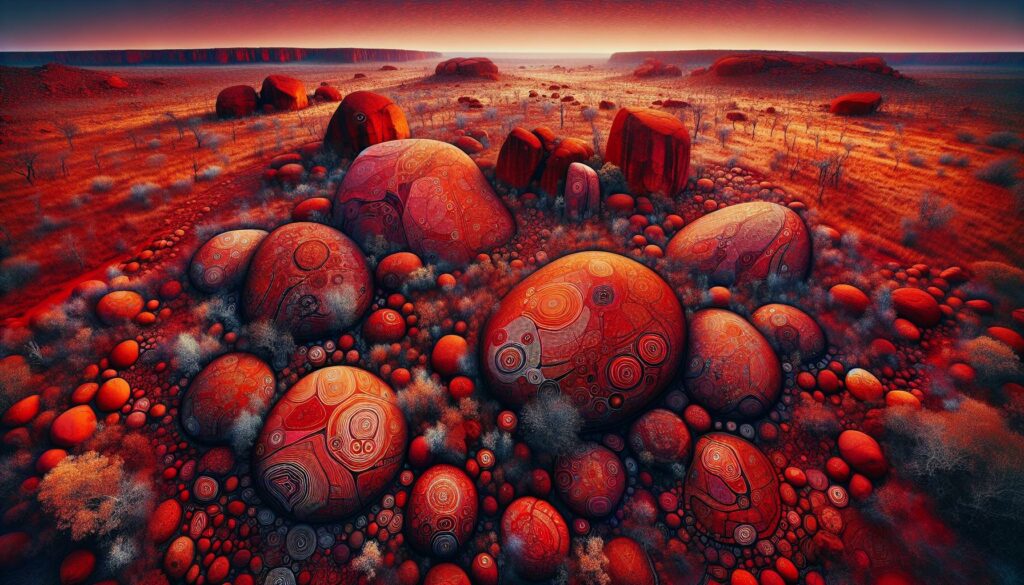
The Devil’s Marbles hold significant places in Aboriginal folklore, embodying powerful legends that explain their existence and cultural importance.
Creation Stories
Arrange, known as the Devil Man, crafted a sacred hair belt for initiated men. As he twisted the hairs into strings, clusters fell to the ground. These clusters transformed into the large red boulders now recognized as the Devil’s Marbles[^1][^4][^5]. This creation story emphasizes the deep connection between the land and ancestral beings, reflecting the spiritual significance of the Marbles in Aboriginal culture.
Mythological Tales
Arrange’s journey extended beyond crafting the hair belt. While making the belt, he spat on the ground, creating the central boulders of the reserve[^1][^4][^5]. After completing his work, Arrange returned to his home in the Ayleparrarntenhe hills. It is believed that he still resides there, maintaining his presence in the region’s mythology. These tales highlight Arrange’s enduring influence and the Marbles’ role as symbols of ancient wisdom and spiritual power.
Geological Characteristics
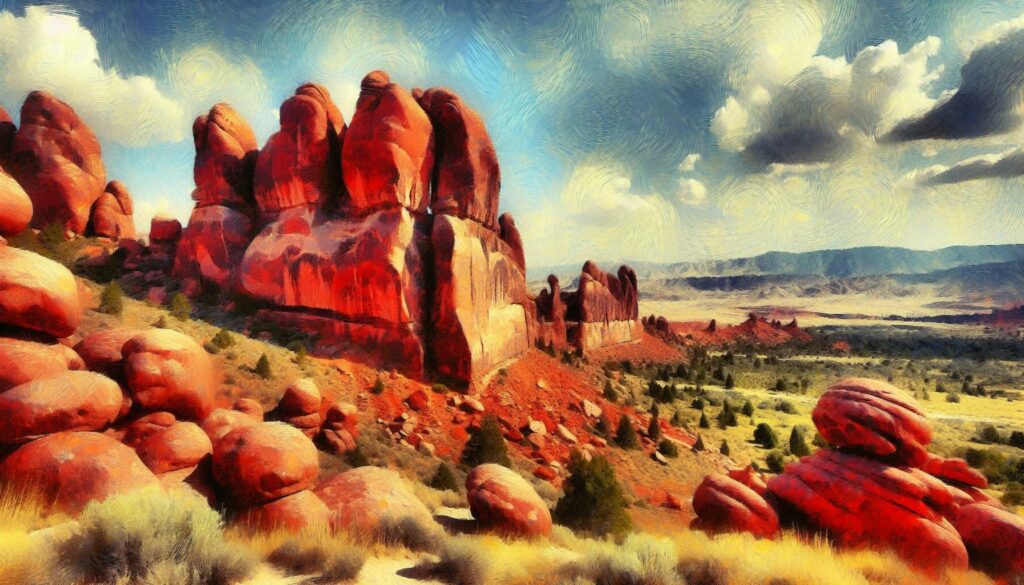
The Devil’s Marbles exhibit distinctive geological traits that contribute to their striking appearance and enduring presence.
Formation and Composition
The Devil’s Marbles consist of coarse-grained granite, a type of igneous rock formed from the slow crystallisation of magma beneath the Earth’s surface. Approximately 1.4 billion years old, this granite underwent extensive weathering and erosion, which exposed the boulders we see today. The uniform size and shape of the marbles result from the jointing processes that fractured the granite, allowing natural forces to sculpt the large, rounded formations over millions of years.
Unique Features
Each marble displays unique surface textures and colour variations, primarily red due to iron oxide staining. The boulders range in size, with some reaching up to five metres in diameter. Their polished appearance is a result of prolonged exposure to abrasive environmental elements such as wind and water. Additionally, the spatial arrangement of the marbles creates a visually captivating landscape, making the Devil’s Marbles a significant geological landmark in the region.
Preservation and Contemporary Importance
Preserving the Devil’s Marbles ensures the continuity of Aboriginal cultural heritage and supports their ongoing significance in modern society.
Conservation Efforts
- Legal Protection: The Devil’s Marbles are designated as a Registered Sacred Site under the Northern Territory Aboriginal Sacred Sites Act, safeguarding them from unauthorized alterations and ensuring their preservation.
- Community Stewardship: Traditional Owners, including the Warumungu, Kaytetye, Warlpiri, and Alyawarra peoples, actively manage the site, conducting regular maintenance and monitoring activities to protect its integrity.
- Government Initiatives: The Northern Territory government collaborates with Aboriginal communities to fund conservation projects, implement sustainable tourism practices, and enforce regulations that protect the Devil’s Marbles from environmental and human-induced damage.
- Educational Programs: Initiatives aimed at raising awareness about the site’s cultural and spiritual importance are conducted in schools and community centers, fostering a broader appreciation and commitment to its preservation.
- Cultural Identity: The Devil’s Marbles remain central to the identity of Traditional Owners, reinforcing their connection to ancestral lands and sustaining cultural traditions through storytelling and rituals.
- Tourism Attraction: Attracting thousands of visitors annually, the Devil’s Marbles contribute to the local economy while promoting cultural exchange and understanding between Aboriginal communities and tourists.
- Educational Value: The site serves as a living classroom for both Indigenous and non-Indigenous learners, offering insights into Aboriginal folklore, geology, and the significance of sacred landscapes.
- Spiritual Practices: Contemporary rituals and ceremonies continue to be performed at the Devil’s Marbles, maintaining their role as a focal point for spiritual expression and communal gatherings among Aboriginal peoples.
Key Takeaways
- Cultural Significance: The Devil’s Marbles, or Karlu Karlu, are sacred sites deeply rooted in Aboriginal folklore, representing creation stories and spiritual beliefs.
- Creation Legends: Myths like the tale of Arrange, the Devil Man, describe how these massive granite boulders were formed, highlighting their connection to ancestral beings.
- Geological Features: Composed of ancient coarse-grained granite, the Marbles showcase unique red colouring and striking formations shaped by millions of years of natural processes.
- Preservation Efforts: Legal protections and active community stewardship ensure the ongoing preservation of the Marbles’ cultural and spiritual heritage.
- Contemporary Importance: Serving as a key element of Aboriginal identity, the Devil’s Marbles attract tourists, support the local economy, and provide educational insights into indigenous traditions.
Conclusion
Experiencing the Devil’s Marbles firsthand deepens my appreciation for the rich tapestry of Aboriginal folklore. These majestic boulders aren’t just geological wonders; they are living symbols of ancient wisdom and spiritual connection. Visiting Karlu Karlu offers a unique glimpse into the enduring traditions and profound respect the Aboriginal people have for their land. It’s a powerful reminder of the importance of preserving these sacred sites, ensuring that their stories and cultural heritage continue to inspire future generations. Exploring the Devil’s Marbles has truly enriched my understanding of Australia’s indigenous heritage and the timeless bond between the land and its people.
Frequently Asked Questions
What are the Devil’s Marbles?
The Devil’s Marbles, also known as Karlu Karlu, are large granite boulders located in the Northern Territory of Australia. These striking geological formations are renowned for their uniform size and rounded shapes, created by extensive weathering and erosion over millions of years. They hold significant cultural and spiritual importance for Aboriginal communities, featuring prominently in Dreamtime stories and serving as symbols of powerful spirits and ancient wisdom.
Why are the Devil’s Marbles important in Aboriginal folklore?
In Aboriginal folklore, the Devil’s Marbles are central to Dreamtime stories that convey cultural heritage and spiritual beliefs. Legends, such as that of Arrange the Devil Man, explain the creation of the boulders and their connection to ancestral beings. These stories emphasize the deep relationship between the land and Aboriginal people, highlighting the Marbles as symbols of ancient wisdom and spiritual power integral to various rituals and traditions.
Who are the traditional owners of the Devil’s Marbles?
The Warumungu, Kaytetye, Warlpiri, and Alyawarra peoples are the traditional owners of the Devil’s Marbles. These Aboriginal communities maintain a strong cultural connection to the site, considering it a sacred place under the Northern Territory Aboriginal Sacred Sites Act. They are responsible for the stewardship and preservation of the Marbles, ensuring that their cultural significance and traditional practices are upheld for future generations.
What geological features make the Devil’s Marbles unique?
The Devil’s Marbles are composed of coarse-grained granite formed around 1.4 billion years ago. Their uniform size and rounded shapes result from natural jointing processes, while unique surface textures and red iron oxide staining enhance their visual appeal. The extensive weathering and erosion that shaped these boulders contribute to their striking appearance, making them a significant geological landmark in the region.
How are the Devil’s Marbles being preserved?
Preservation efforts for the Devil’s Marbles include legal protection under the Northern Territory Aboriginal Sacred Sites Act and active community stewardship by Traditional Owners. Government initiatives support sustainable tourism and environmental protection to maintain the site’s integrity. These measures ensure the continuity of Aboriginal cultural heritage and the Marbles’ relevance in modern society, allowing both Indigenous and non-Indigenous visitors to appreciate and learn from this important landmark.
Can visitors participate in cultural activities at the Devil’s Marbles?
Yes, visitors can experience cultural activities at the Devil’s Marbles. The site attracts thousands of visitors annually who engage in guided tours and learn about Aboriginal traditions and Dreamtime stories. Contemporary rituals and ceremonies are also performed, providing a living classroom for both Indigenous and non-Indigenous learners. These activities help maintain the Marbles’ significance as a focal point for spiritual expression and communal gatherings among Aboriginal communities.
What is the significance of the name “Arrange”?
In the legends surrounding the Devil’s Marbles, Arrange, also known as the Devil Man, is a mythical figure who shaped the boulders while crafting a sacred hair belt for initiated men. His actions, including spitting on the ground to create the central boulders, symbolize the deep connection between the land and ancestral beings. Arrange’s enduring presence in mythology underscores the Marbles’ role as symbols of ancient wisdom and spiritual power within Aboriginal culture.
How does the Devil’s Marbles landscape contribute to its allure?
The spatial arrangement of the Devil’s Marbles creates a captivating landscape that enhances their visual appeal. The uniform granite boulders are scattered across the reserve, forming a striking and harmonious pattern against the natural backdrop. This unique arrangement, combined with the Marbles’ geological characteristics and cultural significance, makes the site an iconic and memorable destination for visitors and a powerful symbol for the Aboriginal communities.
What role do the Devil’s Marbles play in modern Aboriginal identity?
The Devil’s Marbles play a vital role in modern Aboriginal identity by serving as a symbol of cultural continuity and resilience. They are central to various rituals and traditions, reinforcing communal bonds and ancestral connections. The Marbles also attract attention to Aboriginal heritage, fostering pride and awareness among community members. As a living cultural landmark, they help maintain the identity and traditions of Aboriginal peoples in contemporary society.
How old are the Devil’s Marbles?
The granite forming the Devil’s Marbles is approximately 1.4 billion years old. Over this vast period, natural processes such as weathering and erosion have shaped the boulders into their current large, rounded forms. This immense geological history adds to the Marbles’ significance, complementing their cultural and spiritual importance to Aboriginal communities.
Author

Josh Morley holds a Bachelor’s degree in Theology from the Trinity School of Theology and a Diploma in Theology from the Bible College of Wales. His academic journey involved interfaith community projects and supporting international students, experiences that shaped his leadership and reflective skills. Now based in Liverpool, Josh is also the founder of Marketing the Change, a digital agency specializing in web design and marketing.
View all posts

